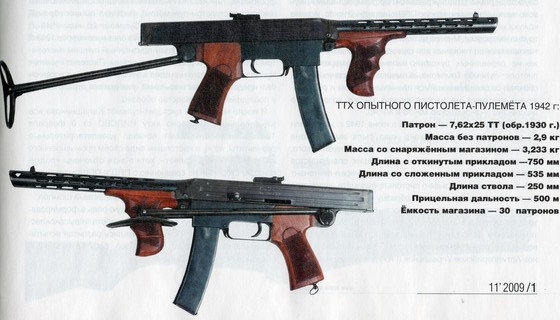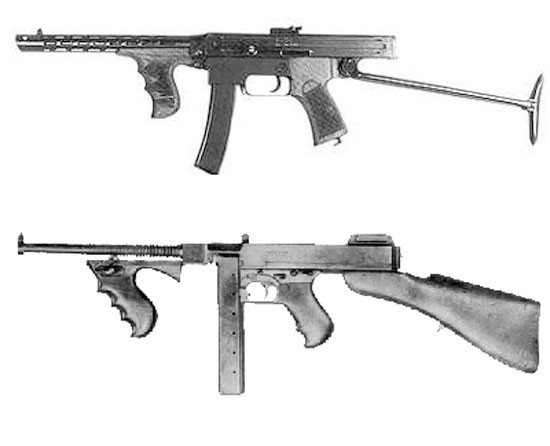HOME | DD
 TheDesertFox1991 — The Kalashnikov submachine gun is a submachine gun
TheDesertFox1991 — The Kalashnikov submachine gun is a submachine gun

Published: 2017-07-17 17:49:46 +0000 UTC; Views: 3146; Favourites: 48; Downloads: 9
Redirect to original
Description
The Kalashnikov submachine gun is a submachine gun with a half-free shutter, created by MT Kalashnikov in 1942. The second of the weapon designs developed by him (the first submachine gun used for the withdrawal of powder gases was not preserved).Being in the hospital after the injury, Senior Sergeant Kalashnikov caught fire with the idea of creating his own model of automatic weapons. I began to make sketches and drawings, comparing and analyzing my own impressions of the battles, the views of comrades in arms, the contents of the books of the hospital library. Useful were also the advice of a lieutenant paratrooper, who worked in a research institute before the war, who was well acquainted with the systems of small arms and the history of their creation.
In the direction of the doctors was sent to the treatment in a six-month vacation. Returning to Matai, with the help of the depot specialists, in three months he created a prototype of his first model of a submachine gun (not preserved until our days).
From Mataia sent to Alma-Ata, where he made a more perfect sample in the training workshops of the Moscow Aviation Institute, evacuated to the capital of Kazakhstan. Later, the sample was submitted to the then head of the Military Engineering Academy named after Samarkand, who was in Samarkand. F. E. Dzerzhinsky AA Blagonravov - an outstanding scientist in the field of small arms.
Although the response of Blagonravov was generally negative, he noted the originality and interestingness of the development and recommended sending Sergeant Kalashnikov for further training. Later, Kalashnikov's submachine gun was presented to the Main Artillery Directorate of the Red Army. Noting some shortcomings and a generally successful design, GAU specialists did not recommend taking Kalashnikov's PP for service for technological reasons. The conclusion read:
The Kalashnikov submachine gun in the manufacture is more complicated and more expensive than the PPSh-41 and PPS, and requires the use of scarce and slow milling operations. Therefore, despite many bribing parties (small weight, small length, the presence of a single lamp, the successful combination of an interpreter and a safety lock, a compact ramrod, etc.), in its present form it does not represent its industrial interest.
The submachine gun had a semi-free bolt, the retraction of which was slowed down due to the interaction of two screw pairs in the bolt group: the bolt - the rotary coupling and the rotary coupling - the helical shank. During the rollback of moving parts, the bolt moves longitudinally along the guides of the receiver, the clutch rotates, and the shank remains stationary - from the twist it is fixed by a protrusion entering the groove at the end of the receiver. At the same time, the coupling, turning on the shank, is turned out of the bolt. Thus, the clutch and the bolt, moving backwards, as it were, "run up" relative to each other, the speed of the bolt retraction decreases and the time of full opening of the shutter increases. This scheme of automation works is unique for this weapon sample.
The overall outer design of the weapon, with the front vertical fire control handle, was somewhat reminiscent of the Thomson M1928 American submachine gun, which was available in small numbers in the Red Army (it is not known, however, whether Kalashnikov was familiar with it).
USM - shock type, allows the conduct of both single and continuous fire. The fire-flag-type translator, located on the left side of the trigger frame, simultaneously performs the functions of the fuse, locking the trigger (in part it is similar to the translator-fuse AK). The front end of the barrel casing serves as a brake-compensator.
An experienced specimen is kept in the collection of the Military Historical Museum of Artillery, Engineers and Signal Corps.
Subsequently, in 1947, Kalashnikov also created a small-sized another submachine gun, already based in part on the design of his machine gun. It was also not adopted for service.






















